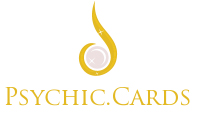All numbers expanding out from “one” contains the power of all its predecessors within its vibration. Therefore, “five” possess the combined energy of “one” through “four.” The meaning of “five” reflects the expansiveness and ability to express the interactions of its core parts. It is the first digit that embodies a constant, if not driven, state of balancing its personal equation. Consider how “five” is tied with humanity. People have five of the following: fingers per hand, toes per foot, and tactile senses. Thus, “five” is yoked to the physical plane with a similar grounded vibration as “four,” but a deeper scale.
The Greeks viewed this grounding physical nature in their concept of the fifth element. They philosophized “five” and honored the pentacle as a perfect symbol to represent the four elements (water, air, earth, and fire) as well as Spirit as a unifier. Plutarch viewed this as the Divine ether to secure harmony between all the elements. Furthermore, the Greeks postulated “five” governed spiritual knowledge and disperses it to all people so they can grow spiritually, similar to the meaning of the Tarot’s fifth card, the Hierophant.
Questions you may ask to better understand the impact of the number five
- What unifies me?
- What is central to my existence
- What areas am I striving to do, know, or be more? Why?
- What is the current state of my health? How do I perceive my physical body and its state of being?
- What is the unifier of my physical, mental, and spiritual self to make it work in concert?
- What does the “fifth element” mean in my life? How can I harness this power daily?
- What would happen if viewed this as a driving force in life rather than something I have repress?
Notice how these questions reflect an increasing drive for greater expansion and intensity of Five energy. Such is the tendency for “five” to be the number of travel, unpredictability, chaos, and apprehension.
Understanding “five” in tarot spreads
In addition to seeing five in each Minor Arcana suit, there is the fifth card of the Major Arcana, The Hierophant. In tarot, “five’s” energy compels us to seek out greater expression, unity and understanding. We are called to know who we are in the universal community. It ask us to manifest our goals while balancing our inner motivations.
Common traits of Five in Western numerology and Tarot:
- Vitality
- Total honesty
- Health
- Apex
- Exploration
- Knowledge
- Pushing limits
- Growth
- Unification
- Hindsight
- Physical body
- Passion
- Ideals
- Synchronicity
- Chaos
- Overing odds
Visual representations of Five
- Half circle – Desire for wholeness
- Flag – Victory or if inverted, surrender
- Table top – Putting it all out there. Candor
- Arrow – Need for grounding. When pointed to the earth, a need for stability or land travel
- Pentacle – The five-pointed star signifies the four elements and spirit both in concert with each other and independently.
Common association with Five
- The color blue
- The letters E, N, and W
- Qabalah symbol “hay”
- Both Jupiter and Aries in astrology
Personal traits of Numerological Fives
People with the numerology of Five posses its energy in the form of sincere interest in others, often serving as community activists. They are high-spirited and enjoy traveling. These individuals are highly adaptable in most situations and do well without routine or structure. They face a challenge with ingenuity and big picture thinking. They can multi-task easily, but can be poor with time management. Unfortunately, this means they lose out on certain opportunities, but no matter the hurdle, a Five personality always achieves their endeavors and comes out ahead.


The article aptly links the symbolism of the number five to various elements, physical and metaphysical. It provides a balanced view by connecting historical perspectives with modern interpretations.
The exploration of ‘five’ as a symbol in Western numerology and tarot is quite enlightening. The depth of personal traits associated with this number is well-articulated.
The integration of numerology, tarot, and Greek philosophy provides a multifaceted approach to understanding the number five. However, some points could have been expanded for clearer insight.
Agreed. The relationship between ‘five’ and its impact on spiritual growth, as discussed through the lens of the Hierophant, could benefit from additional elaboration.
The article offers a comprehensive understanding of the number five, weaving it through various cultural and philosophical contexts. The questions posed for self-reflection are particularly thought-provoking.
Interesting read. The visual representations and common associations with the number five add layers to its meaning. The piece prompts readers to consider its influence in their daily lives.